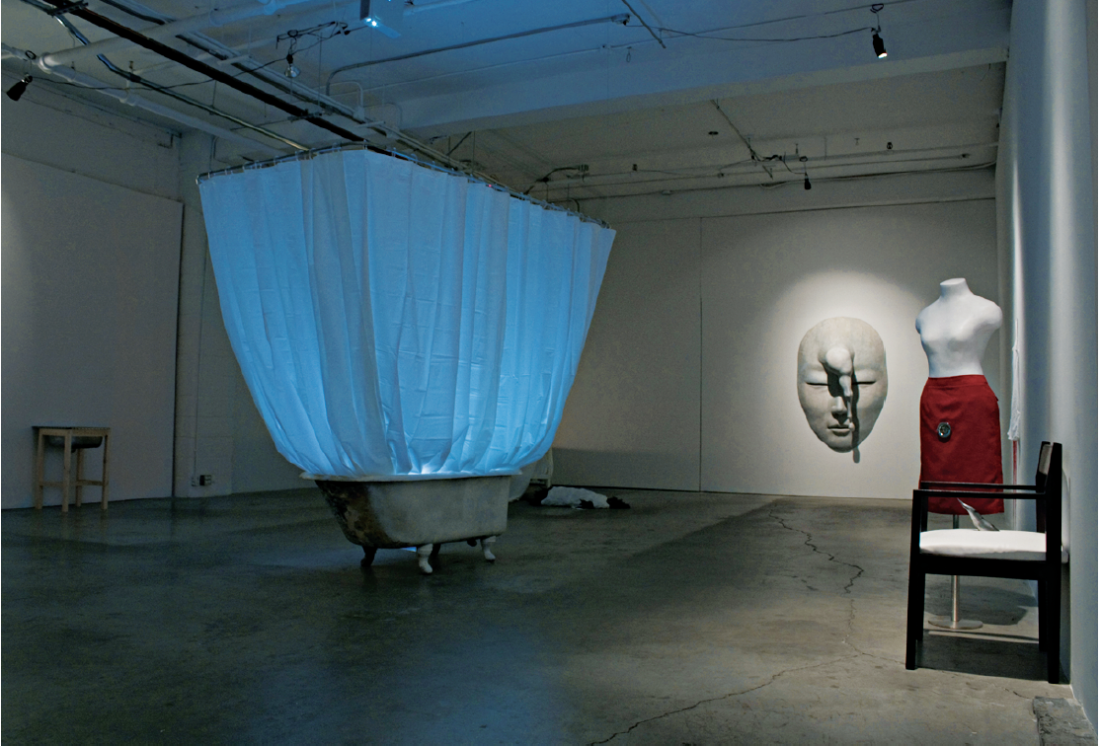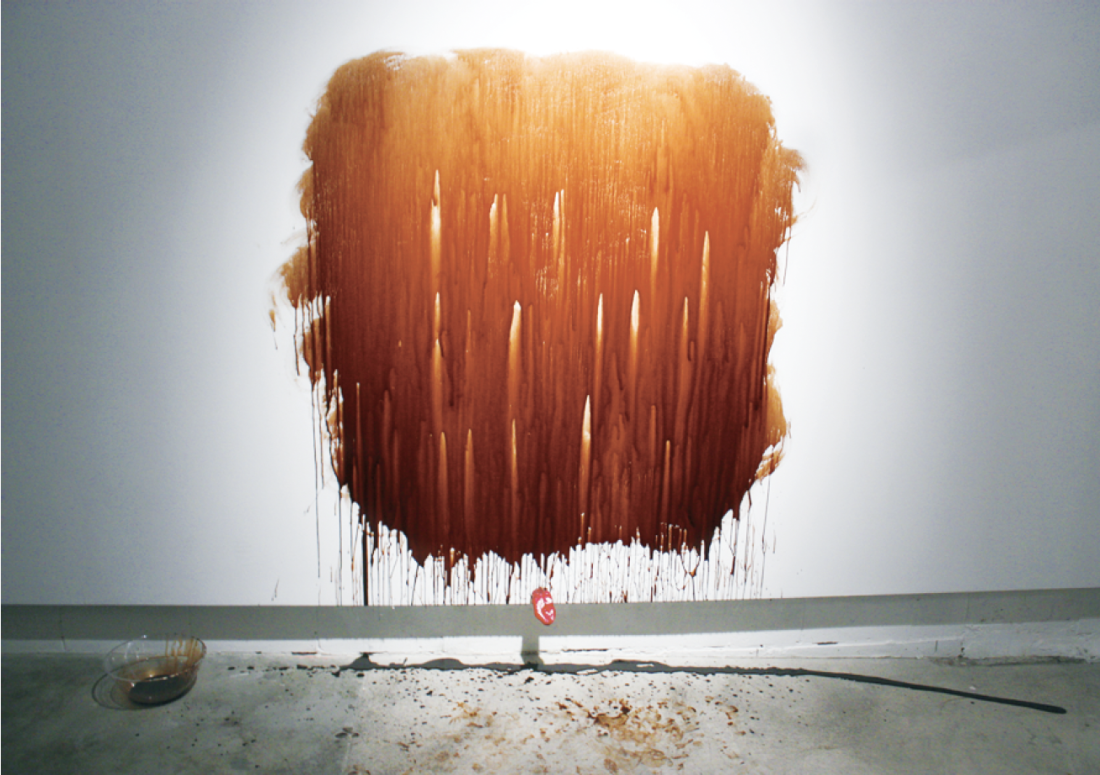Insoon Ha
Insoon Ha’s work deals with binaries. Mired in the abject, her practice is predicated within the liminal space of borders. She creates pieces of art that are neither here nor there, presenting us with bodies fused together from animal and human forms, babies that are oversized, linear white halls that have their architectural structure broken by individual tongues. It is hard to develop a gauge by which to measure her individual works, for they are unsettling; they disrupt our sense(s) and expectation of the familiar. There is no clear delineation of order.

Insoon Ha, installation view of “Drain” at The Museum of Contemporary Canadian Art, Toronto. Photo by: Fayiaz Chunara. © Museum of Contemporary Canadian Art.
Ha’s installation in the Project Room at MOCCA, “Drain,” is yet another venture into the sculptural uncanny. Consisting of 12 separate works, one of which is the remnant of a performance, the exhibition features mostly new works by the artist that explore her self-professed obsession with drains. Of the 12 works, four of the pieces contain visible drains and several others refer to the physical act of draining: Dripping, 2009, a white dress whose material is pierced by hundreds of red threads with needles hanging from it; She is her mother, 2009, a white sugar-filled bathtub with a video projected on it enclosed by a shower curtain; and Face, 2009, a large sculpture of a face that has a horse’s leg affixed to it that, from a distance, could read as a festering wound. For Ha, the incorporation of drains in her practice is “symbolic of the act and attempt to rid oneself of pain and shame.”
The work Stay, 2009, consists of a stainless steel sink resting in a sparse wooden frame. The sink is filled with water and is stopped by a plug that appears to be floating atop the fluid in it. Given that much of Ha’s past work has been informed by Korea’s history of comfort women, the Korean women who were forced to sexually service members of the Japanese military during World War II, one can easily read the works as alluding to sexual violence specifically directed towards women. Indeed, the visceral nature of works such as a White, 2009, a pair of white pantyhose with a knife blade protruding between the two legs, and Chair, 2009, a chair with a menacing curving metal spike protruding directly from the centre of the seat, makes it hard to interpret them in any other manner. Yet it seems as though Ha’s intent is not to completely submerge the viewer in the horror that may be contained within some of her art. Though she acknowledges that she “might push extremes a little,” Ha feels that the “deformed forms” that she produces “are still beautiful although they are distorted.”

Insoon Ha, image of the remnants of the performance. At MOCCA, Toronto. Photo by Fayiaz Chunara. © Museum of Contemporary Canadian Art.
And they are beautiful. The minimalist sculptures are fashioned from the combination of ubiquitous everyday objects. Their stark simplicity is made jarring by the pairing of objects and forms with instruments and items that, together, seem incongruous; it is when these forms are coupled that ruptures occur. Their power lies in the space where they hover, in the still moments before vicious acts of brutality and/or disruption transpire. Perhaps what makes them seem more palpable is that the horror alluded to by the works is sanitized. The blood that we are met with in Dripping is simply cotton string; the rumpled bed in the work “Drain,” which might have been the site of sexual humiliation and violence, bears no staining; and the bodily fluids that threaten to leak beyond the barriers of skin and cloth never materialize. It is only when visiting the site of the artist’s performance (which took place in the hallway adjacent to the gallery) that we witness any evidence of sullying: the white wall is smeared with a brown substance (chocolate) that has dripped onto a tongue attached beneath and has run down the length of the floor. On a video monitor in the corner, we see the artist making a futile attempt to inscribe words onto the wall. Ha writes with her tongue the words taste, pant and obey, but each word is obliterated by dripping chocolate, leaving only the faintest of marks behind.
Perhaps what makes the installation so heady (and heavy) is the suggestion that pain and suffering are not necessarily something to be gotten over, or rid of, but that they are continual, ever present and perhaps a necessary part of our lived realities. Nowhere is this more evident than in the work She is her mother, a video projection depicting two twinned figures sitting opposite each other. Tethered to each other by an umbilical cord, the figures move separately yet remain bound together, unable to free themselves from the other. ❚
“Drain” was exhibited at mocca in Toronto from November 14, 2009, to January 3, 2010.
Sally Frater is an independent curator and writer who has curated exhibitions at A Space Gallery, the McMaster Museum of Art and the Niagara Artist Center. In 2010, she will co-curate an exhibition of Dionne Simpson’s work at the Art Gallery of Peterborough.

